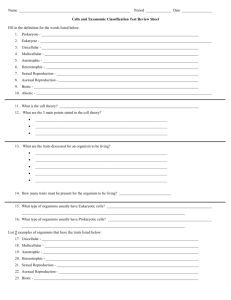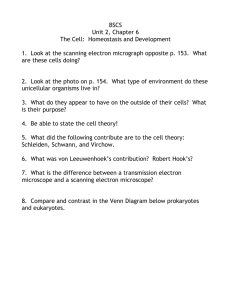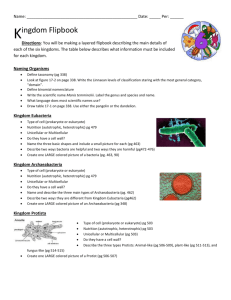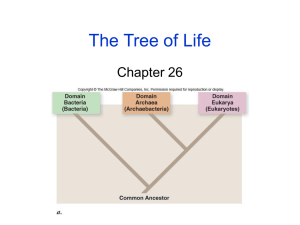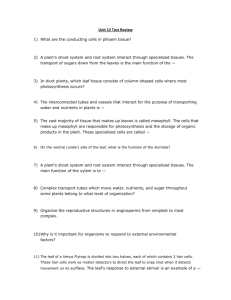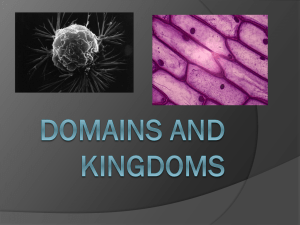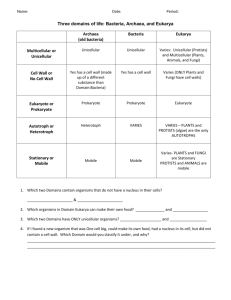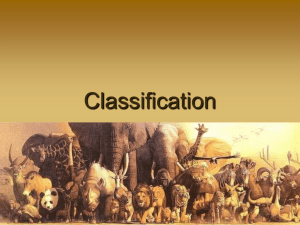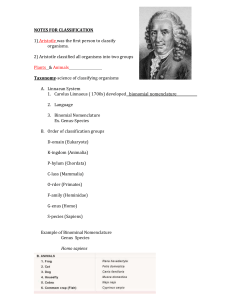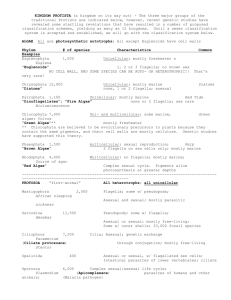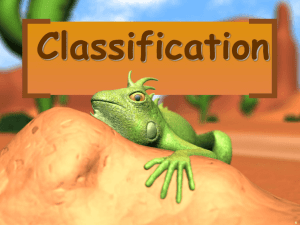Archaebacteria Domain
advertisement
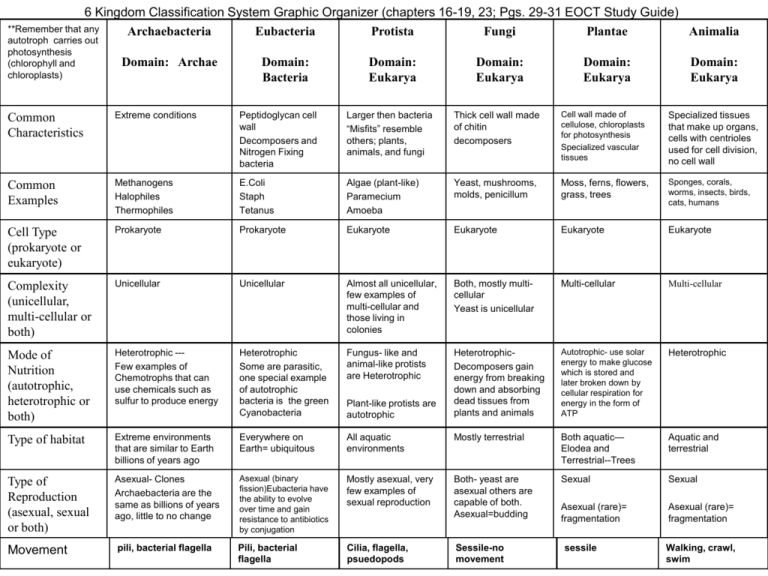
6 Kingdom Classification System Graphic Organizer (chapters 16-19, 23; Pgs. 29-31 EOCT Study Guide) **Remember that any Archaebacteria Eubacteria Protista Fungi Plantae Animalia autotroph carries out photosynthesis (chlorophyll and chloroplasts) Domain: Archae Domain: Bacteria Domain: Eukarya Domain: Eukarya Domain: Eukarya Domain: Eukarya Common Characteristics Extreme conditions Peptidoglycan cell wall Decomposers and Nitrogen Fixing bacteria Larger then bacteria “Misfits” resemble others; plants, animals, and fungi Thick cell wall made of chitin decomposers Cell wall made of cellulose, chloroplasts for photosynthesis Specialized vascular tissues Specialized tissues that make up organs, cells with centrioles used for cell division, no cell wall Common Examples Methanogens Halophiles Thermophiles E.Coli Staph Tetanus Algae (plant-like) Paramecium Amoeba Yeast, mushrooms, molds, penicillum Moss, ferns, flowers, grass, trees Sponges, corals, worms, insects, birds, cats, humans Cell Type (prokaryote or eukaryote) Prokaryote Prokaryote Eukaryote Eukaryote Eukaryote Eukaryote Complexity (unicellular, multi-cellular or both) Unicellular Unicellular Almost all unicellular, few examples of multi-cellular and those living in colonies Both, mostly multicellular Yeast is unicellular Multi-cellular Multi-cellular Mode of Nutrition (autotrophic, heterotrophic or both) Heterotrophic --Few examples of Chemotrophs that can use chemicals such as sulfur to produce energy Heterotrophic Some are parasitic, one special example of autotrophic bacteria is the green Cyanobacteria Fungus- like and animal-like protists are Heterotrophic HeterotrophicDecomposers gain energy from breaking down and absorbing dead tissues from plants and animals Autotrophic- use solar energy to make glucose which is stored and later broken down by cellular respiration for energy in the form of ATP Heterotrophic Type of habitat Extreme environments that are similar to Earth billions of years ago Everywhere on Earth= ubiquitous All aquatic environments Mostly terrestrial Both aquatic— Elodea and Terrestrial--Trees Aquatic and terrestrial Type of Reproduction (asexual, sexual or both) Asexual- Clones Archaebacteria are the same as billions of years ago, little to no change Asexual (binary fission)Eubacteria have the ability to evolve over time and gain resistance to antibiotics by conjugation Mostly asexual, very few examples of sexual reproduction Both- yeast are asexual others are capable of both. Asexual=budding Sexual Sexual Asexual (rare)= fragmentation Asexual (rare)= fragmentation Movement pili, bacterial flagella Pili, bacterial flagella Cilia, flagella, psuedopods Sessile-no movement Plant-like protists are autotrophic sessile Walking, crawl, swim
